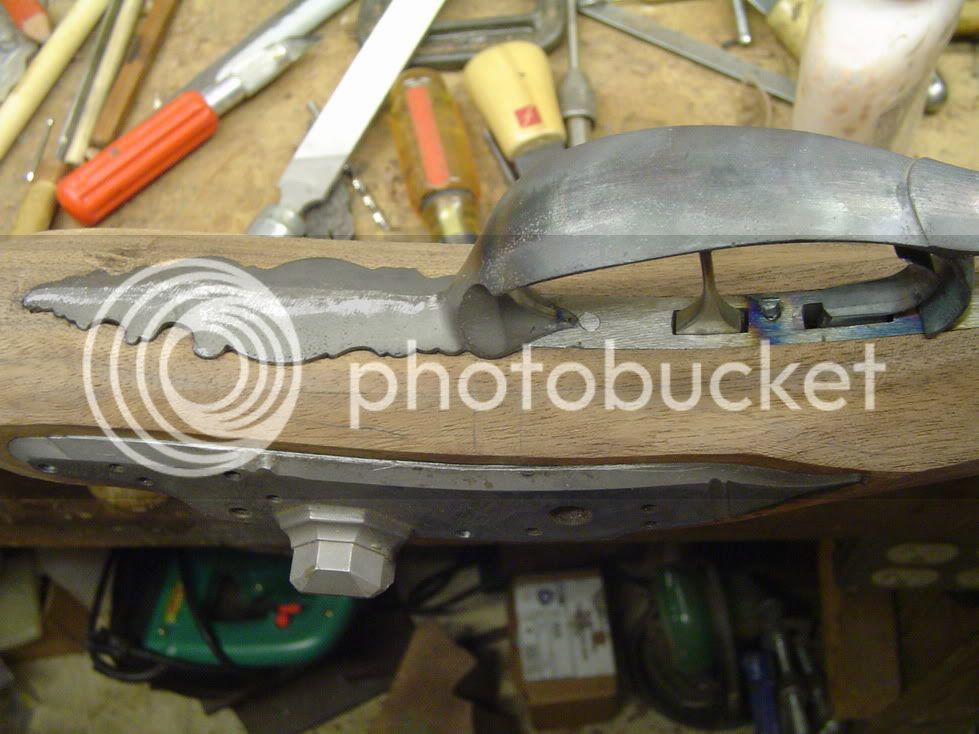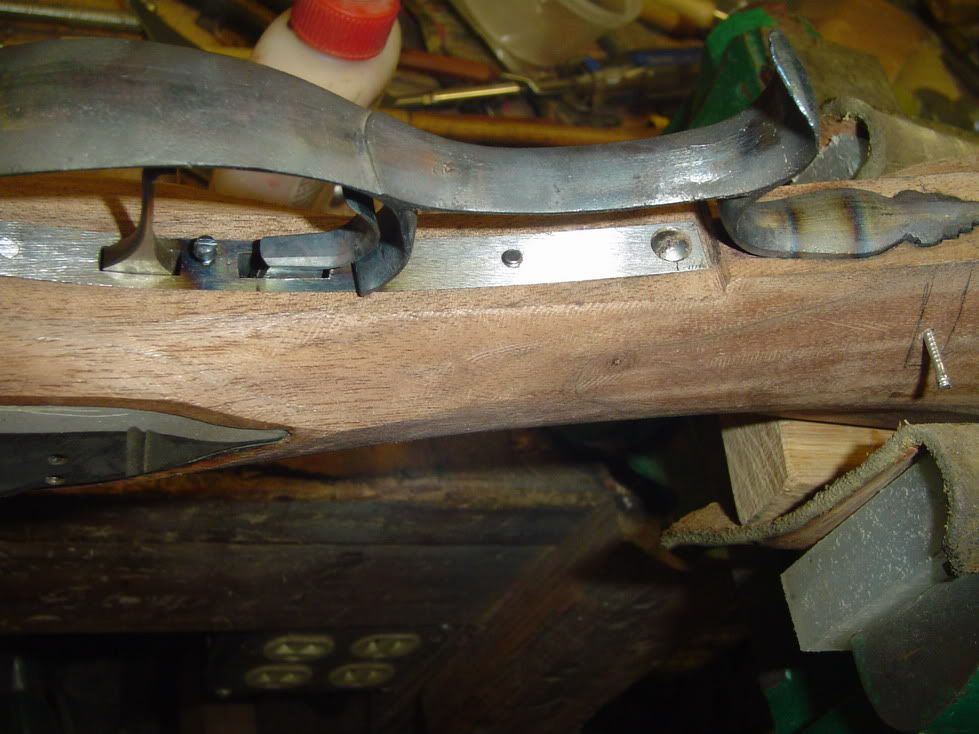The inlets cut for the trigger plate on most of the "pre-carved" kits are generic and intentionally left undersize so that many different triggers can be installed.
Actually, this mortice is intended just to provide some room for whatever is on top of the trigger plate when you start to install it.
You didn't mention what kind of trigger you are going to install but you will need to determine where, fore and aft it needs to be to work properly. This cannot be done until the lock has been installed.
Once the lock has been installed, notice the location of the sear arm that releases the hammer or cock. This arm is the key to determining where the trigger assembly will go.
Once located, make a mark on the lower area of the lock panel on the wood and write "sear" next to it.
If the trigger is a simple single trigger, not a set trigger, the trigger will be pivoting on a pin. This pin needs to be located 5/16 to 3/8 of an inch foreward of the sear arm to give a easy trigger pull. If it is located too far forward the trigger pull will be heavy and there is not much that can be done to correct it.
If the trigger is a double set trigger there will be a integral blade on the front trigger which rises when the front trigger is pulled.
On the rear "set" trigger there will also be a blade that rises when the rear trigger moves forward.
With the rear trigger left "unset" its blade will be sticking upward just a little.
Move the rear trigger forward about 1/8 of an inch and hold it there while you move the front trigger backwards about 1/8 of an inch and hold it there.
The two trigger blades will be forming a "V" where they meet or cross each other. Mark this location on the side of the trigger plate.
Now, locate this mark in line with the sear arm mark on the lock panel.
Hold the trigger plate in this position and mark the front and rear locations on the wood with a pencil or pen.
This position will undoubtedly require that quite a bit of wood is removed to install the trigger plate and the key here is to go slowly.
Remove just enough wood from the pre cut mortice to allow the stuff on top of the trigger plate to fit down into the wood. You can cut this a little oversize (forward and aft) to allow the plate to be moved to the position you've marked on the wood.
When the trigger plate is at the correct fore/aft location, make sure it is roughly centered with the lock panels on the stock and lightly clamp it in position with a C clamp.
Using a pointed Exacto-Knife cut straight down into the wood using the edges of the trigger plate as a guide. This cut should be about 1/16 deep and completely around the outside of the trigger plate. It is a good idea here to repeat this cut several times to make sure it is completely cut.
Remove the C clamp and the trigger plate.
Use your 1/4" wide chisel to cut from the "inside" of the inscribed cuts towards the cut to remove a little wood all around the new home for the trigger plate.
After removing the wood right next to the cuts, use the 1/4" chisel to lower the center area.
Reinstall the trigger plate into its new home and recut straight down with the Exacto-Knife around the edges making sure you don't enlarge the original cut. All cuts around the trigger plate must be straight down into the wood.
Keep this procedure up until the trigger plate is flush with the wood. If it seems to hang up, use some inletting black or lipstick to make sure the upper part of the trigger assembly is not hitting on the wood somewhere. Also, cut a trench for the trigger blade to live in. It must have a clear slot extending to the sear arm.
Have fun.







